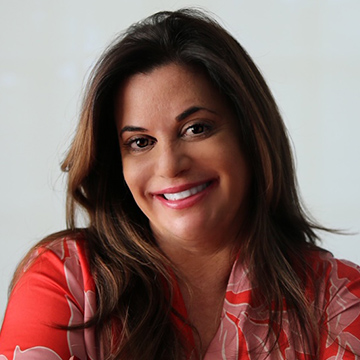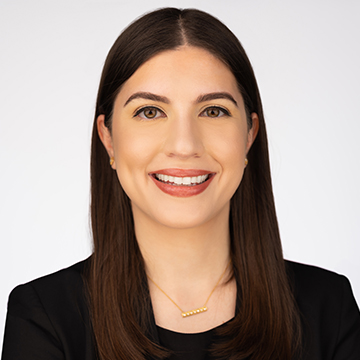Back in December, L-Acoustics celebrated a victory.
Headquartered in Paris, the professional audio systems manufacturer had just obtained prison sentences for loudspeaker counterfeiters operating in Guangzhou, China. Five individuals were arrested for fabricating and selling fake L-Acoustics products. They were found guilty of counterfeiting a registered trademark and received prison sentences of up to three years. Chinese authorities also seized counterfeit signs, molds, and other evidence during the arrest.

Laurent Ostojski, L-Acoustics senior legal counsel and head of its Anti-Counterfeit Task Force, explained that this case was a bit unusual, since it was the Chinese authorities that alerted the manufacturer to the problem. In criminal cases like this, the manufacturer must coordinate with, and rely on, local authorities to move things forward.
[South Carolina College Football Gets Loud with the Help of L-Acoustics]
Most times, L-Acoustics learns of potential counterfeiting activity through its own monitoring efforts, its customers, or its global distribution network. These cases are generally handled as civil lawsuits; the company has more control in civil cases because it leads the investigation. It then works with attorneys on the ground to pursue legal action, if necessary.
Define 'Win'
The main goal of pursuing legal action against counterfeiters, Ostojski noted, is to remove fake products from the market and put counterfeiters out of business. "Winning” a counterfeiting case is not a revenue-generating exercise.
“Of course, we try to get remedies because it costs money to initiate a lawsuit, [but] most of the time, the money we get as a remedy is lower than the money we had to invest,” Ostojski explained. A win, then, is usually when the company is reimbursed for its legal expenses.
Counterfeit products are a problem for a number of reasons. In Pro AV, counterfeits don’t deliver the same performance that both AV integrators and their clients expect. They can also pose a safety threat: Faulty wiring could produce a fire hazard, for example, or a low-quality rigging apparatus could cause equipment to fall on performers or audience members during a show. And if producers are unable to present a genuine certification of conformity for their rig during a safety inspection, they risk having their entire production shut down.
“It’s been very interesting to see, with our membership, how counterfeits travel from one end of the world to the other—and the routes that they take.”
Christina Mitropoulos, INTA
Buyers of counterfeit products aren’t immune to legal action as well. In most countries, owning or renting fake products is illegal. “People can be sued just because they bought a pair of fake products—that’s something that we are not afraid to do,” said Ostojski. “Of course, we try to focus on the counterfeiters—going directly to the root of the problem—but we have already acted against companies that bought fake products to put them on the market. So [when it comes to] integrators buying fake products, the mere fact that they own fake products is counterfeiting in most countries.”

At Shure, a solid distribution network helps to curb counterfeiting, explained Abby Kaplan, vice president of global retail sales. Depending on the region, customers may purchase genuine Shure products directly through a distributor or online through Shure or an authorized channel partner. “The number one thing is to setup a robust, vetted partner community of resellers and distributors that are authorized," she explained, "and we put all of our effort into directing people to buy from those authorized sources."
Kaplan conceded that the online landscape makes monitoring counterfeiting activity more complex, but Shure maintains a network of e-commerce partners that are authorized to sell its products. “There are some [sites] around the world that are mostly the purveyors of counterfeit goods, and we try to educate [customers] to beware of those types of sites,” she said.
[Q&A: Environmentally Friendly Packaging Part of Shure Sustainability Efforts]
Monitoring and Mapping
The International Trademark Association (INTA), headquartered in New York City, focuses on supporting trademarks and complementary intellectual property. It has a global membership of brand owners, and its Anti-Counterfeiting Committee is made up of 350 members worldwide.
Christina Mitropoulos, director of external relations and head of INTA’s Anti-Counterfeiting Committee, noted that large brands (luxury handbag manufacturers, for example) have in-house teams that are dedicated to anti-counterfeiting activities. She said smaller brands tend to outsource their anti-counterfeiting efforts, either to a specialized law firm or a tech provider that will monitor for counterfeiting activity online. At L-Acoustics, production volume isn’t nearly as large as that of a luxury handbag brand. But as in-house senior legal counsel, Ostojski spends about 50% of his time fighting against counterfeiting.

While counterfeiting spans the globe, Mitropoulos said the major hubs continue to be China, APAC, and South Asia. Once manufactured, though, these products travel around the planet.
“It’s been very interesting to see, with our membership, how counterfeits travel from one end of the world to the other—and the routes that they take,” she said. “And because this is such a global issue, it’s very difficult because the regulations or laws in one region are different in another part of the world. Keeping up with the frameworks that are in place globally is definitely a challenge.”
Some INTA members have teams that are dedicated to intelligence gathering, so they can map these routes. According to Mitropoulos, it’s one thing to target the point of counterfeit manufacturing— but engagement along the entire supply chain is important, too. This means that organizations like INTA and their membership must work with border officials around the world to educate them on their role in combatting counterfeiting, especially if they’re located in a hub that’s used for the transit of counterfeit products.
[Beyond the Tech: Watch Your Language]
Some regions have prioritized intellectual property and their own anti-counterfeiting measures over the years, but Mitropoulos said other countries continue to be less proactive. “When we are interacting and engaging with officials in [some] parts of the world, there is definitely a learning curve," she added. "But it seems, overall, that there is a willingness to at least try to address the issue. How that actually plays out differs around the world.”
Red Flags for Pro AV Counterfeits
Often, it’s possible for B2B customers and end users to determine whether the product they are procuring is a counterfeit. Here are a few common red flags to consider.
• Price. If it’s too good to be true, it probably is.
• Inventory quantities. Pro AV is a niche market driven by companies that, in general, manufacture high-quality products in a limited production environment. “When you come across a company claiming that they have hundreds or even thousands of each product [in stock], there may be a problem,” observed Laurent Ostojski, senior legal counsel and head of the Anti-Counterfeit Task Force at L-Acoustics.
• Bad spelling. Many counterfeits are produced in countries where English (or the language the authentic manufacturer uses) is not the primary language. “When you look at the product, sometimes you will notice spelling mistakes,” Ostojski noted. “Genuine companies pay a lot of attention to all the product markings, especially because some of the markings we put on our products are mandatory under national laws.”
When buyers source products from authorized retailers, distributors, and online marketplaces, the need for identifying these red flags disappears, according to Abby Kaplan, vice president of global retail sales at Shure. She encourages integrators and other Shure customers sourcing Shure products to utilize its dealer locator, which is accessible through its website.
“If a customer has a question, or maybe a nagging feeling about who they’re purchasing from—maybe it’s a new source that they’ve never bought Shure from before—reach out to us,” she said. “We’re happy to let you know if it’s an authorized source or not.”
